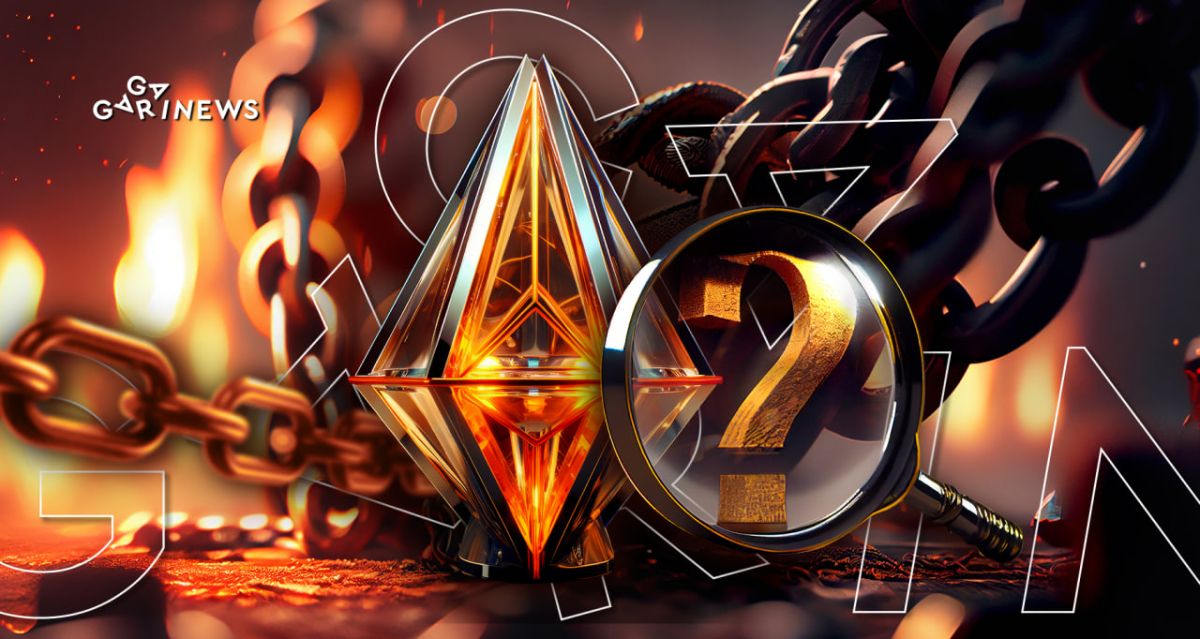Ethereum’s Lesser-Known Facts

Every crypto venture has its share of hidden tales, and Ethereum is no exception. There are aspects that its founders might prefer to keep under wraps. Dive into these little-known facts from the project’s history that might surprise you.
On this page
1. Before Ethereum's emergence, Litecoin, founded by Charlie Lee, was considered the second most influential cryptocurrency. At that time, many believed that only a cryptocurrency mirroring Bitcoin's features held promising investment prospects.
2. Vitalik Buterin's vision for Ethereum was sparked by Hayao Miyazaki's animated masterpiece “Laputa: Castle in the Sky.” In the movie, a character named Sheeta wields a potent Ethereum crystal that harbors vast energy and can guide one to the stars.
3. Gavin Wood embraced the idea of a decentralized world computer presented by a 19-year-old Buterin in 2013. Wood then introduced the young visionary to mathematics professor Charles Hoskinson, who subsequently became a co-founder of the platform.
4. Ethereum's development was crowdfunded, as the founders didn't have the financial resources for a full-fledged project launch. Rumors suggest a significant portion of the investments originated from China.
5. Blockchain explorer data suggests that the Ethereum team engaged in pre-mining activities. Vitalik Buterin tends to dodge questions about this issue. However, persistent rumors in the crypto community imply it was a tactic to settle with Chinese investors, preventing them from influencing the project's direction. This matter has since cast a shadow over Ethereum's reputation, raising concerns about its potential centralization.
6. Many conflate Ethereum with Ether. Ether (ETH) is the native token that people trade, while Ethereum represents the foundational blockchain network. Within the Ethereum network, ETH is also used to operate apps and monetize completed projects.
7. Ethereum isn't just a distributed network; it acts as a vast decentralized computer optimized for dApps that integrate with the project's ecosystem. It's a strategic move as users of these apps inevitably use Ether to cover gas fees, subsequently bolstering ETH's liquidity.
8. Ethereum continues to rely on miners to process state transitions and initiate smart contracts. Fees, which are dependent on the amount of computation executed, are paid out in ETH. This setup curbs potential Denial of Service (DoS) attacks on the network, facilitating developers' efforts in producing efficient code.
9. Ethereum's protocol uses the programming language Solidity. This Solidity code is then translated into the code for the Ethereum Virtual Machine (EVM), tailored for self-executing contracts. Interestingly, Gavin Wood, not Buterin, created this language. What's more, when Wood developed the Polkadot protocol, which many view as a rival to Ethereum, he utilized a mix of languages, including Rust and JavaScript. He never clarified to the media why he didn't repurpose the Solidity code he had earlier created.
10. While Bitcoin's blockchain utilizes the SHA-256 hashing algorithm, Ethereum has adopted the SHA-3 (Keccak) algorithm since 2016 to safeguard its transaction integrity. Formulated by a team in 2015, this algorithm remains esteemed as one of the most robust against cyber breaches.
11. Ethereum and Ethereum Classic diverged in 2016. The split was a result of internal disagreements about how to address a major hack that led to the theft of significant funds. Vitalik Buterin chose to alter the transaction history, a decision that Gavin Wood and Charles Hoskinson did not support. This difference in approach resulted in a hard fork, leading the foundational members to go separate ways.
12. The first Decentralized Autonomous Organization (DAO) debuted on Ethereum on April 30, 2016. Known as “The DAO”, it aimed to fundraise for developing new network applications. While it rapidly raised $150 million within a fortnight, a hacking incident siphoned off these funds. This breach triggered a network fork, but the hackers remained elusive.
13. Bitcoin is perceived as the pioneering blockchain, with Ethereum following as the successor. Enhanced or mixed consensus mechanisms, evident in blockchains like IOTA, Avalanche, Tron, and Polkadot, mark the third generation of decentralized systems.
14. Initially, Ethereum adopted the PoW algorithm to draw miners and cultivate a solid community base. However, there were plans to transition to PoS since 2017.
15. Amid the cryptocurrency surge and ETH's meteoric rise, Nvidia found itself producing specific graphic card models catering to Ethereum miners. This production shift caused a notable shortage in standard Geforce GTX units, with miners snapping them up in large quantities, much to the gamers' chagrin.
16. The ETH denominations pay homage to Hal Finney (finney, 1/1000) and Nick Szabo (szabo, 0.000001 ETH).
The content on The Coinomist is for informational purposes only and should not be interpreted as financial advice. While we strive to provide accurate and up-to-date information, we do not guarantee the accuracy, completeness, or reliability of any content. Neither we accept liability for any errors or omissions in the information provided or for any financial losses incurred as a result of relying on this information. Actions based on this content are at your own risk. Always do your own research and consult a professional. See our Terms, Privacy Policy, and Disclaimers for more details.

























